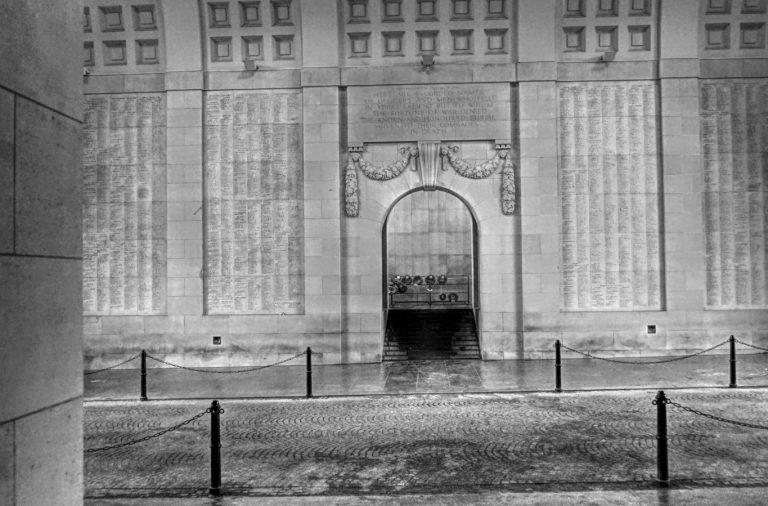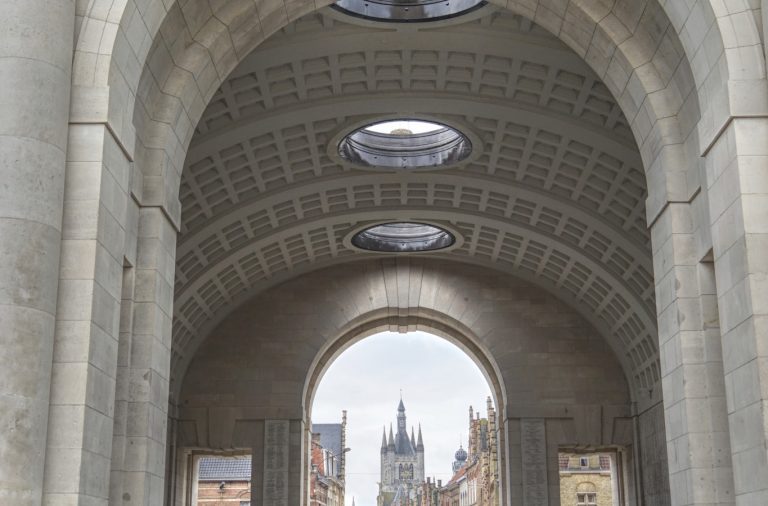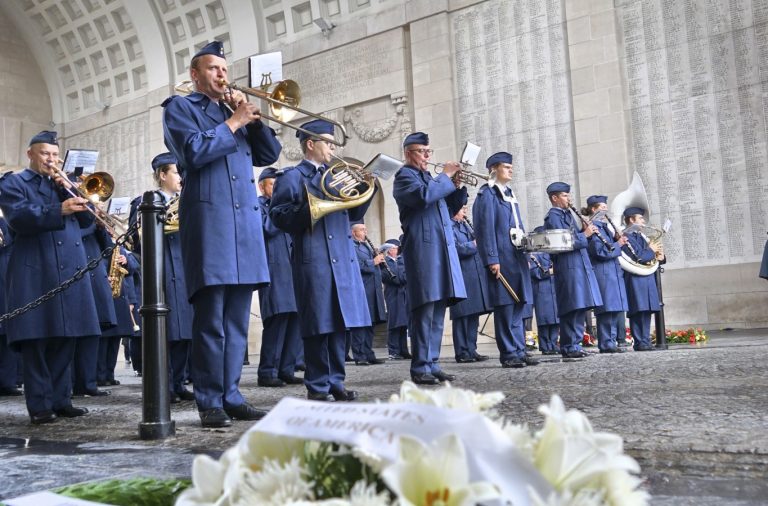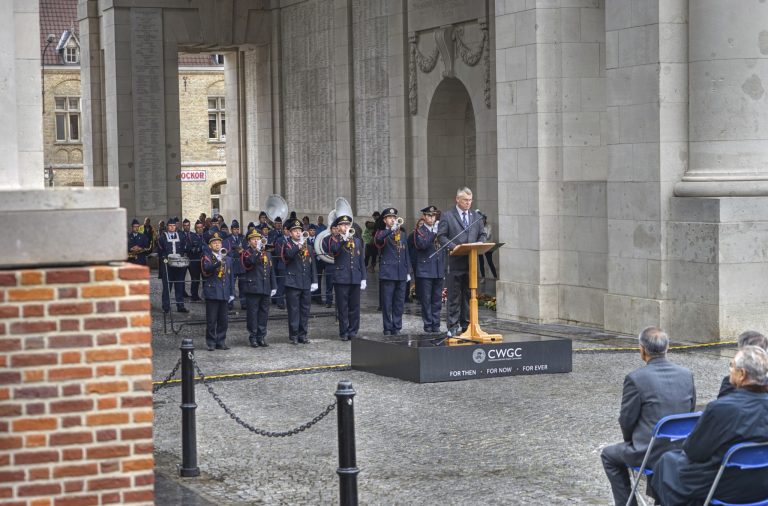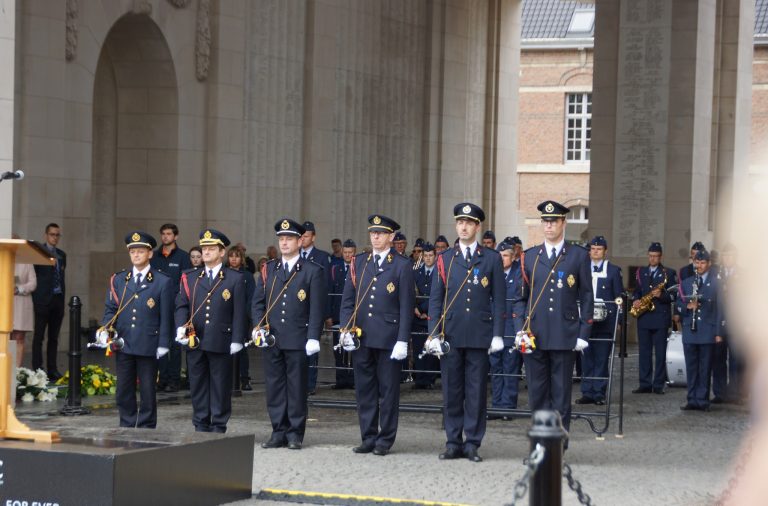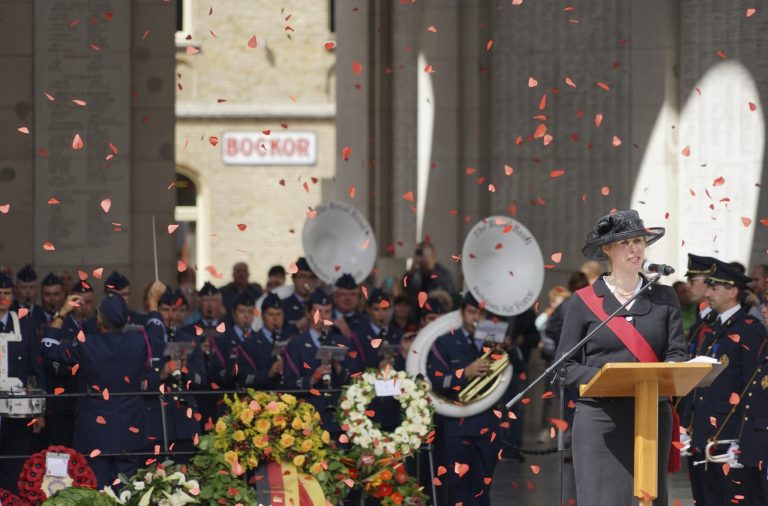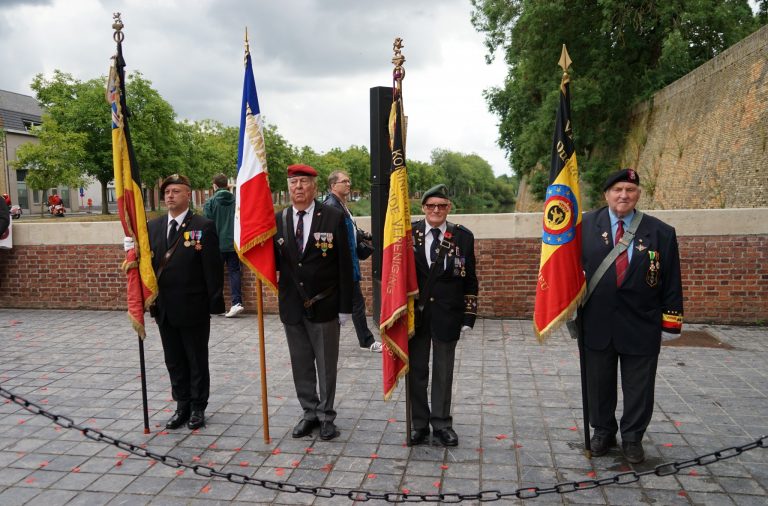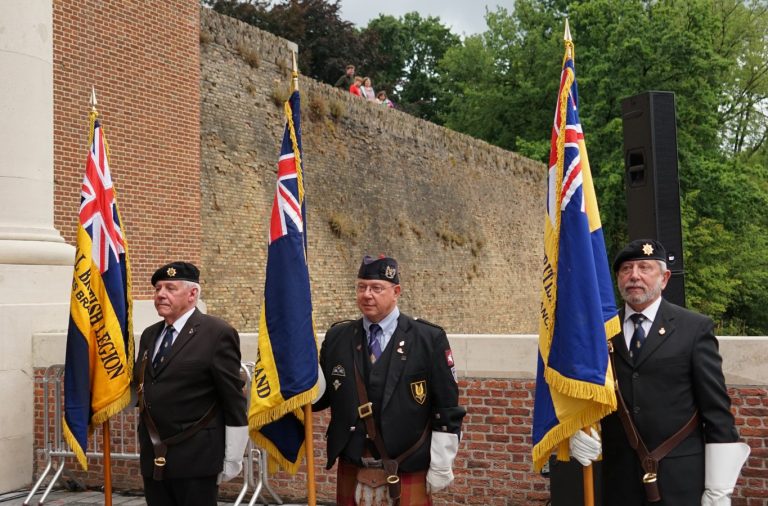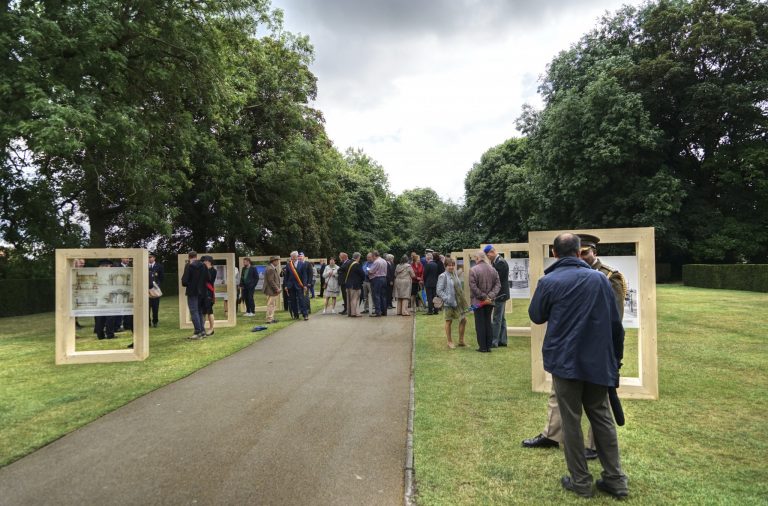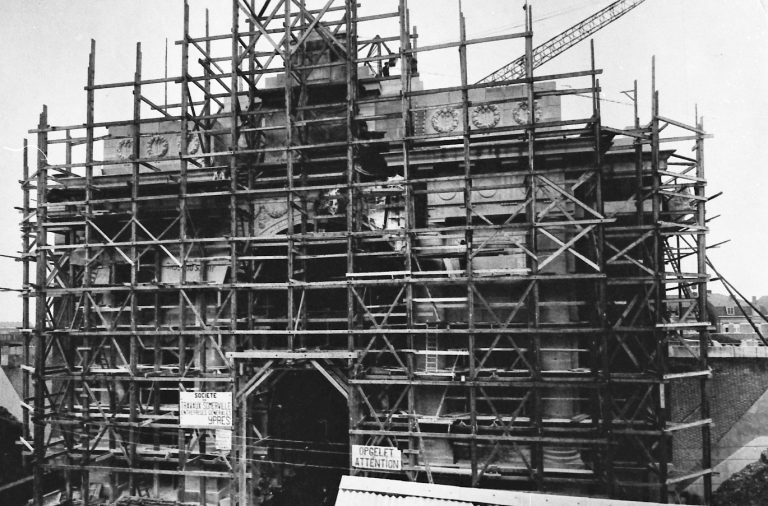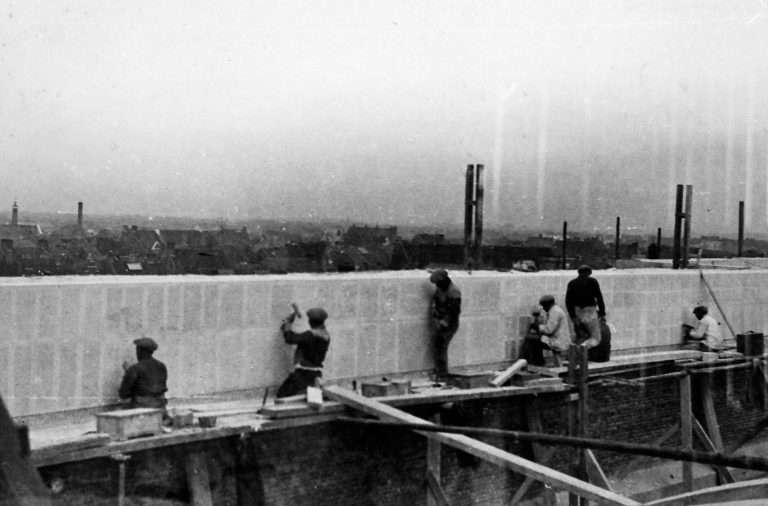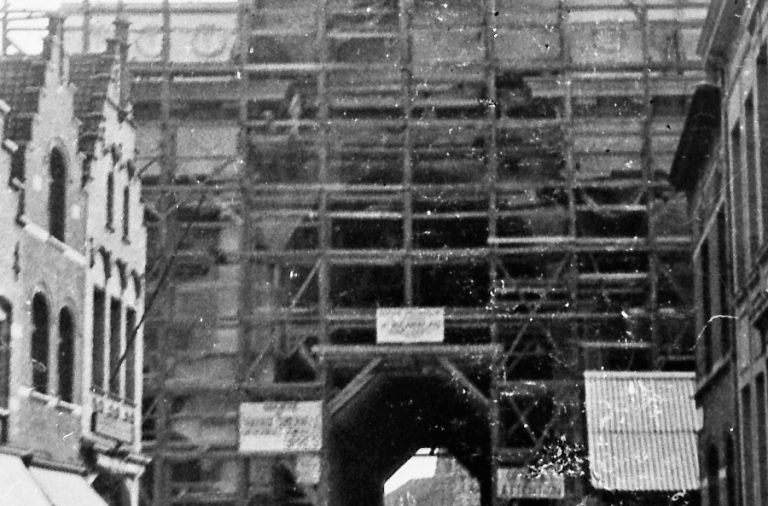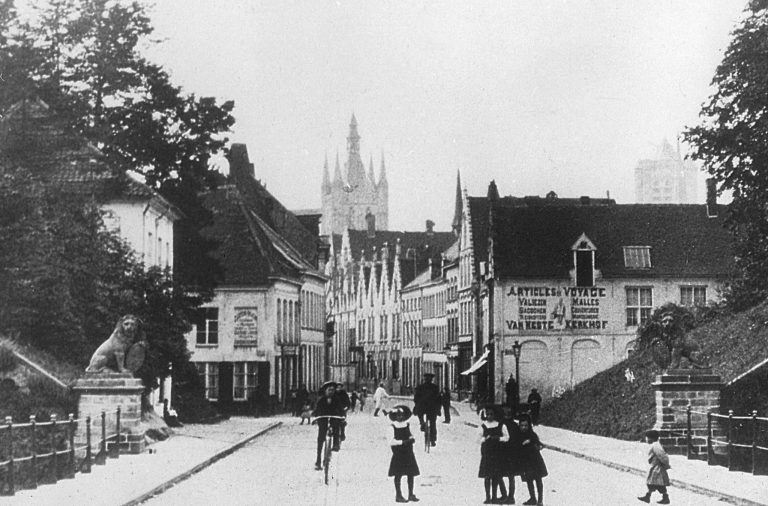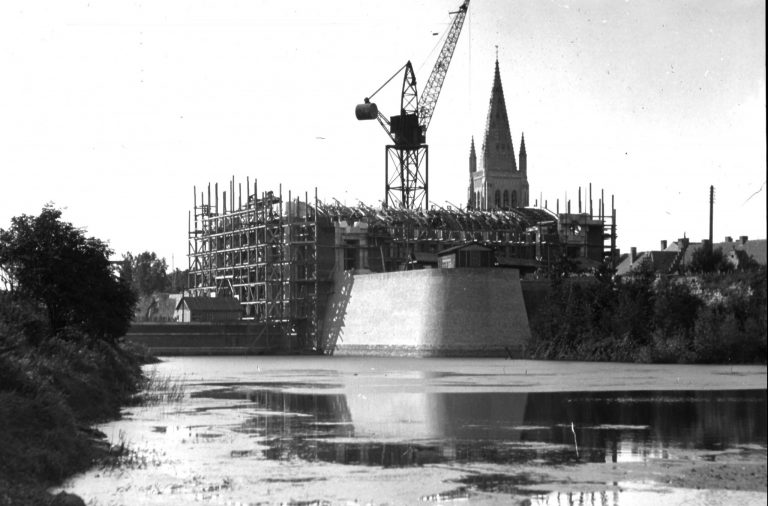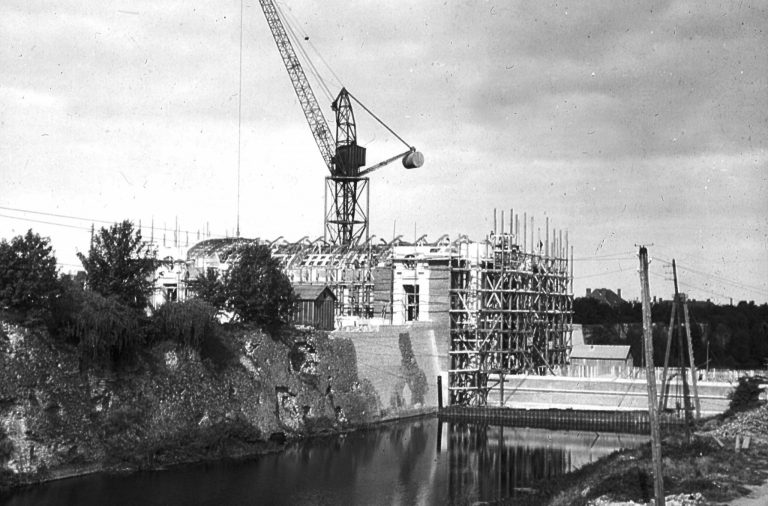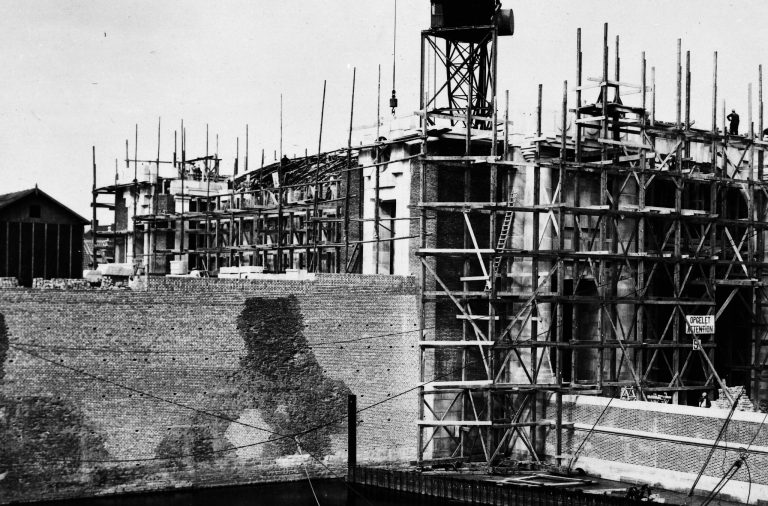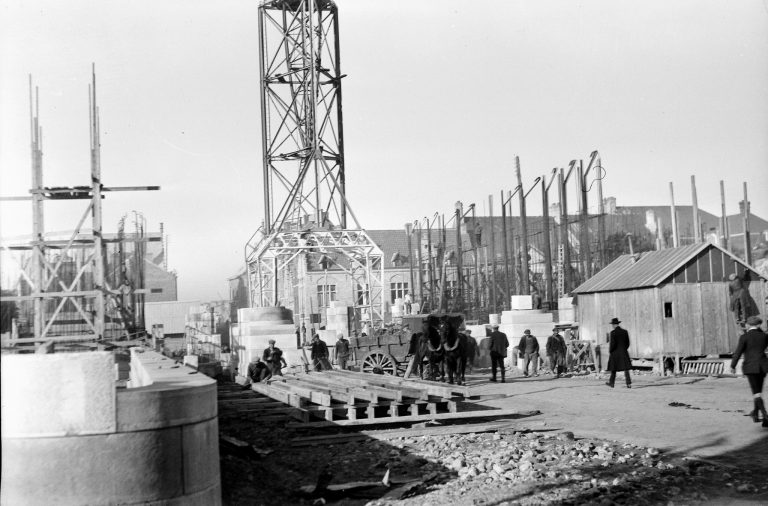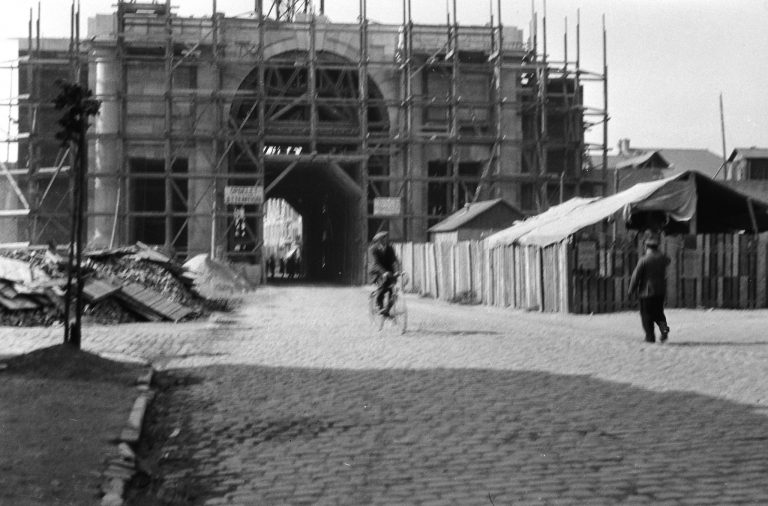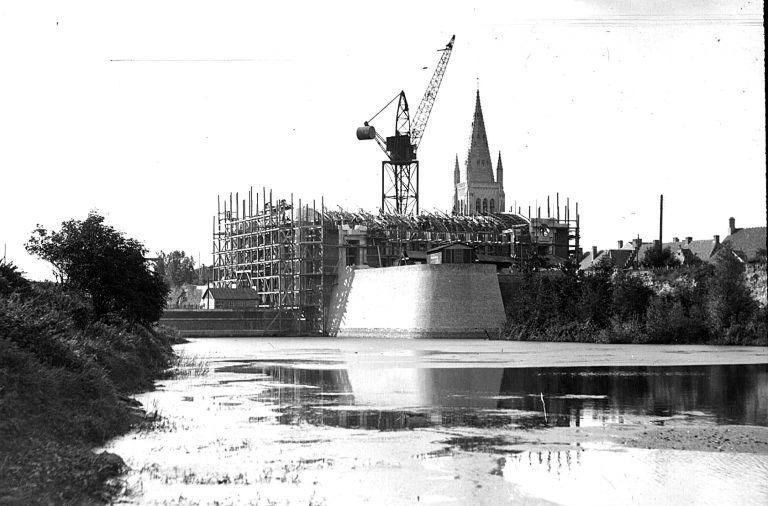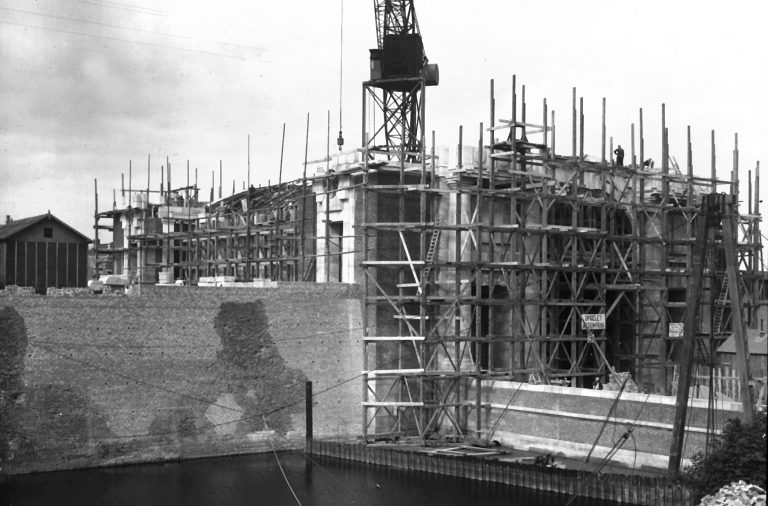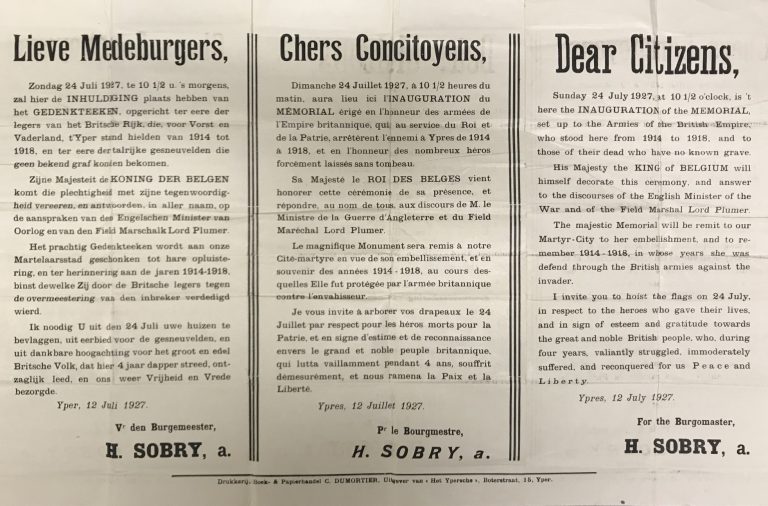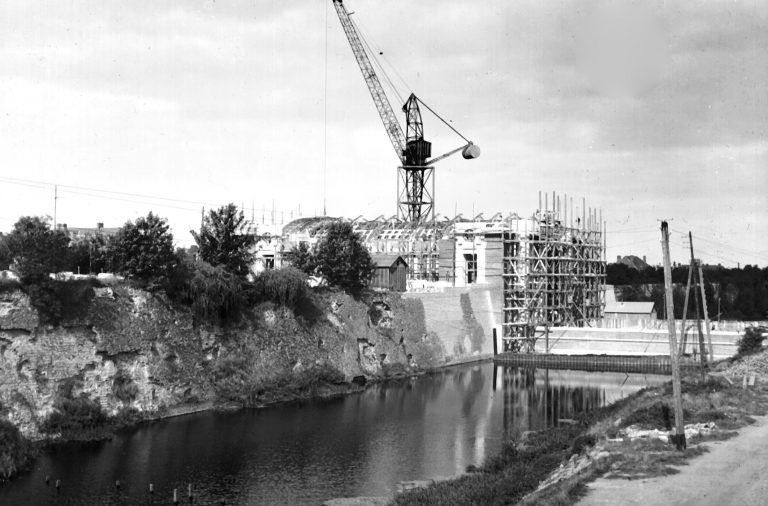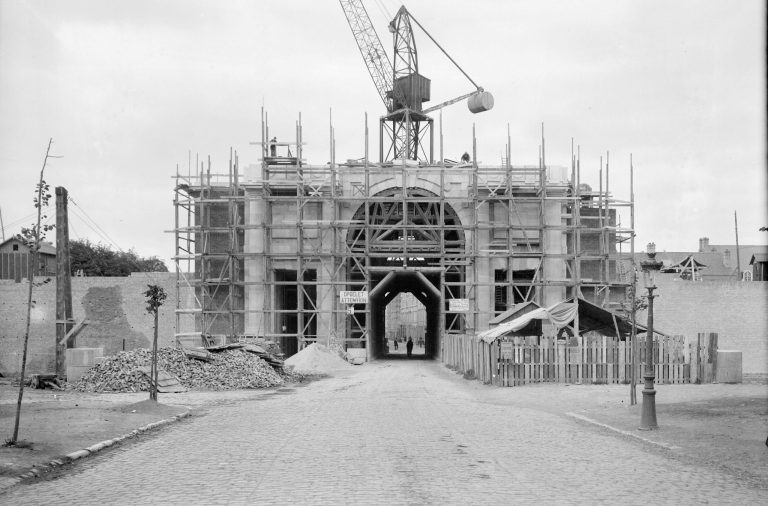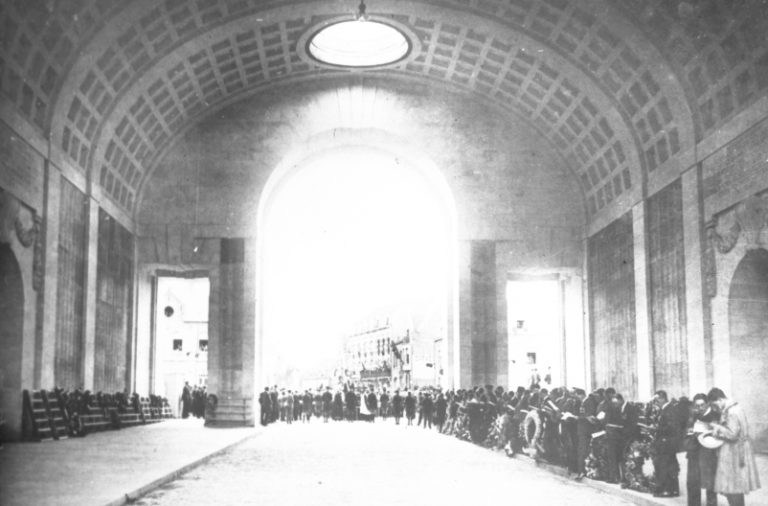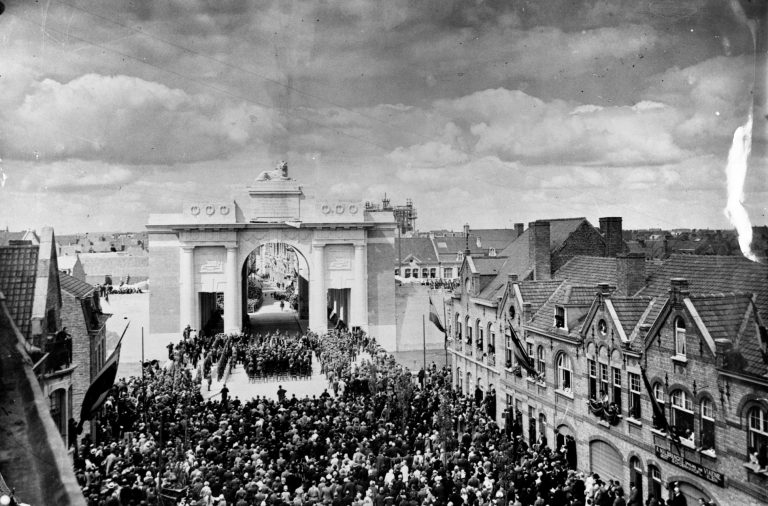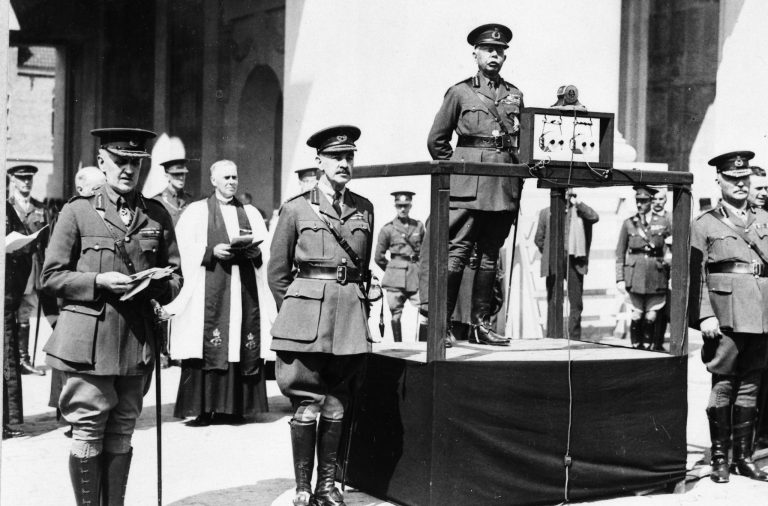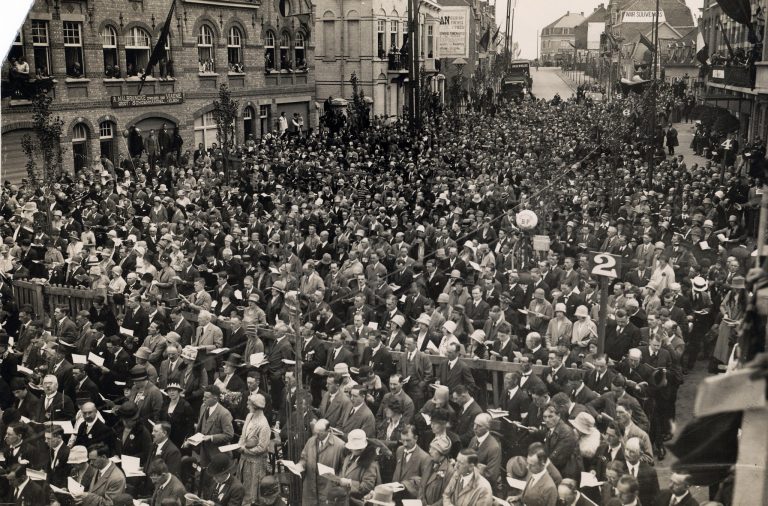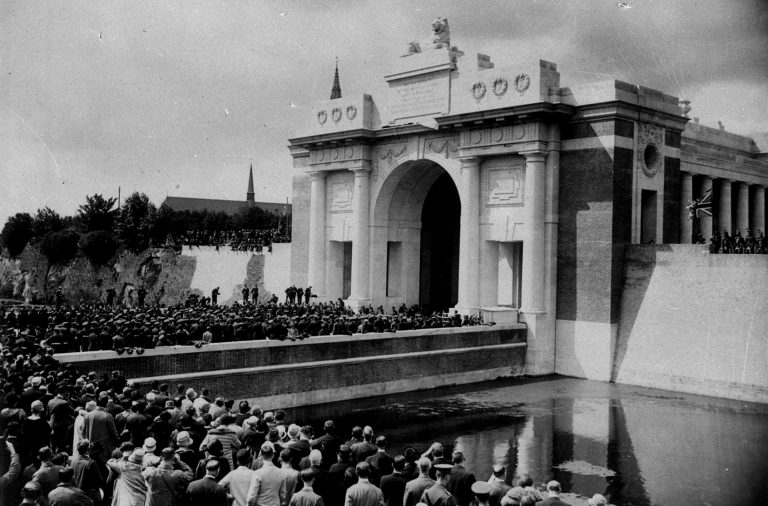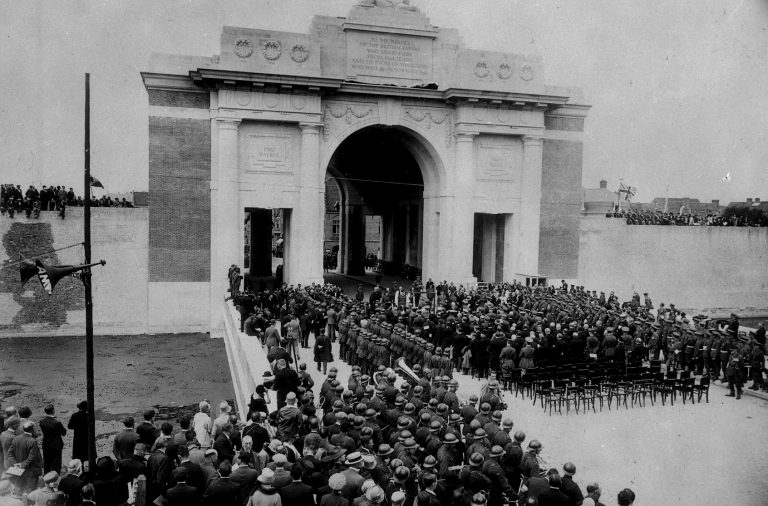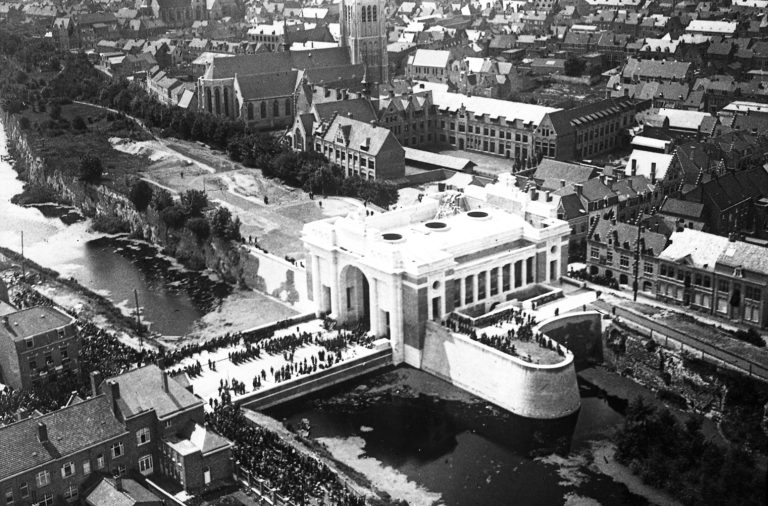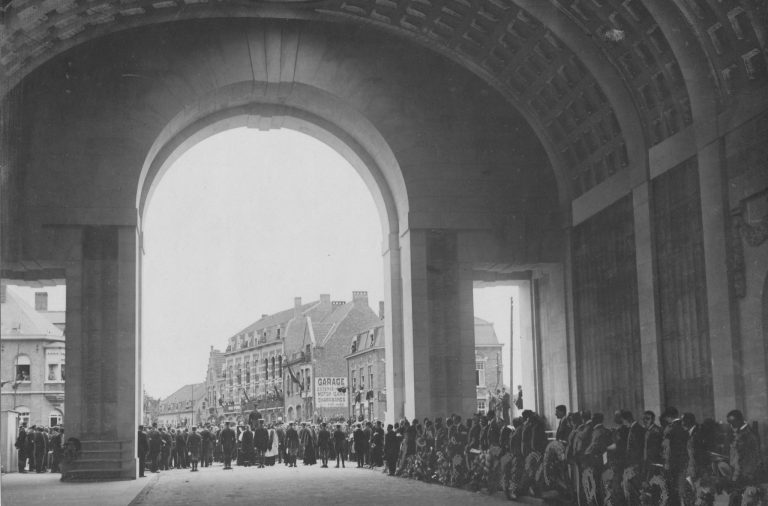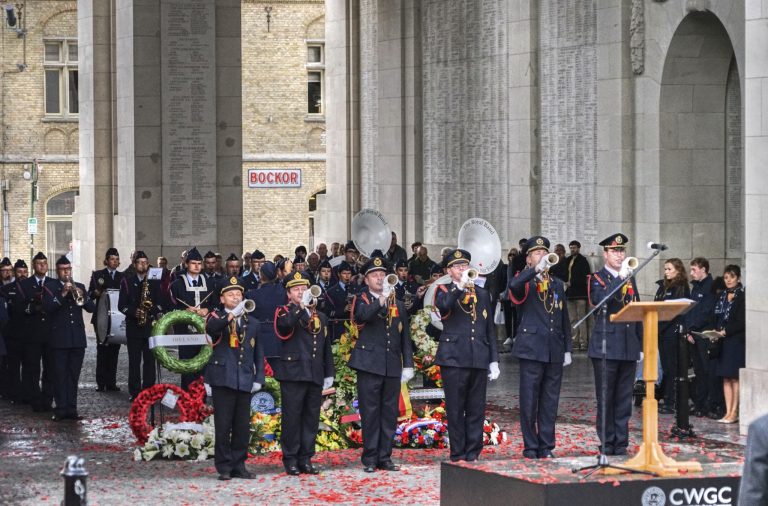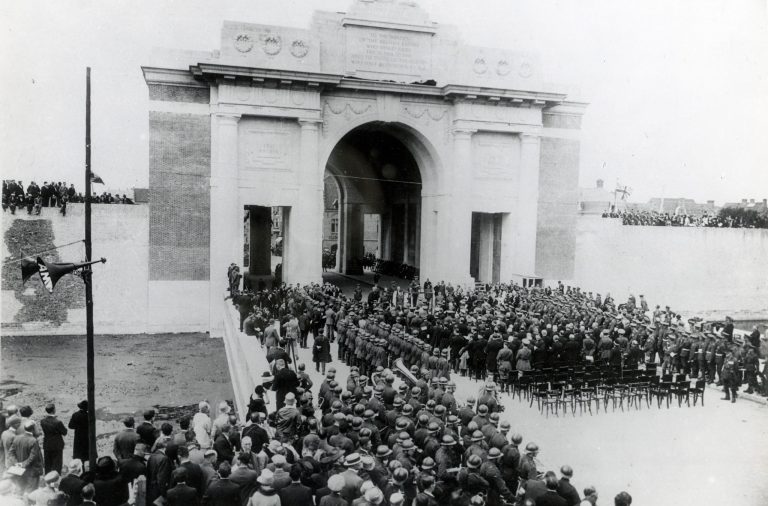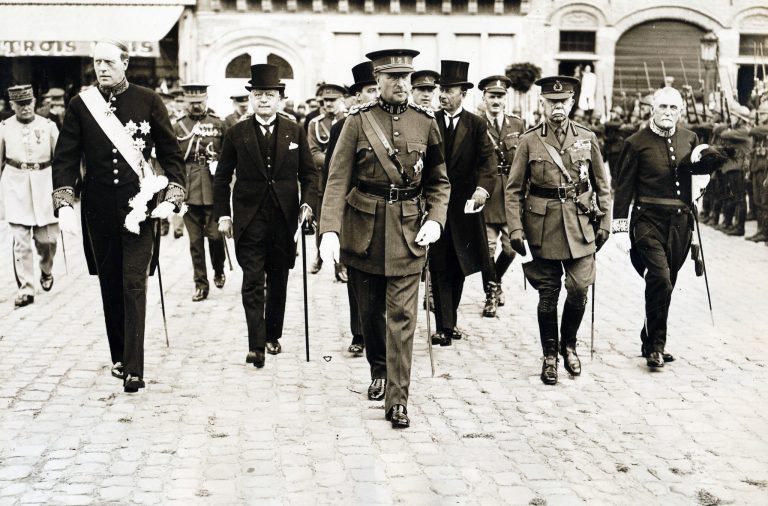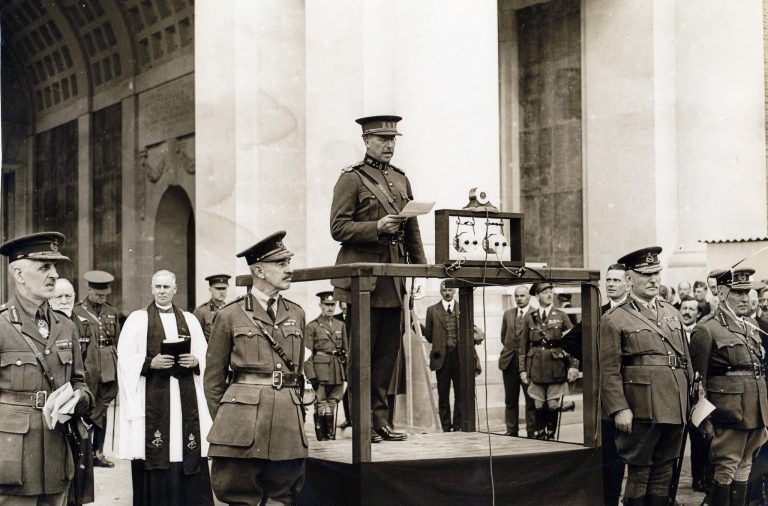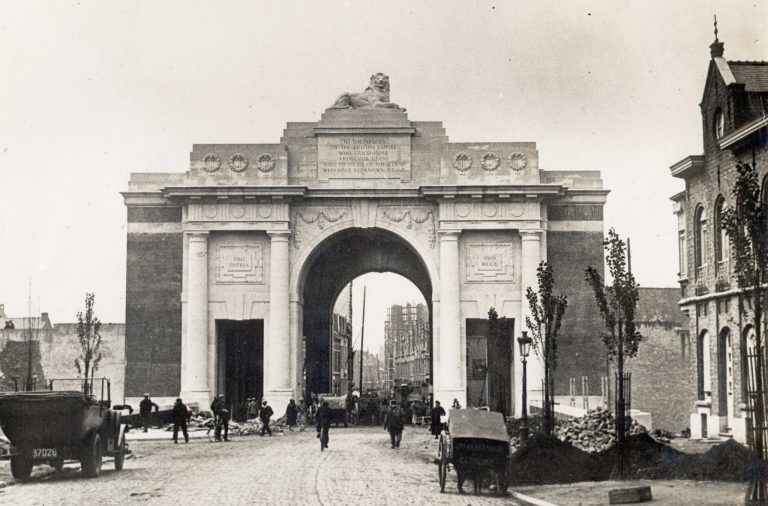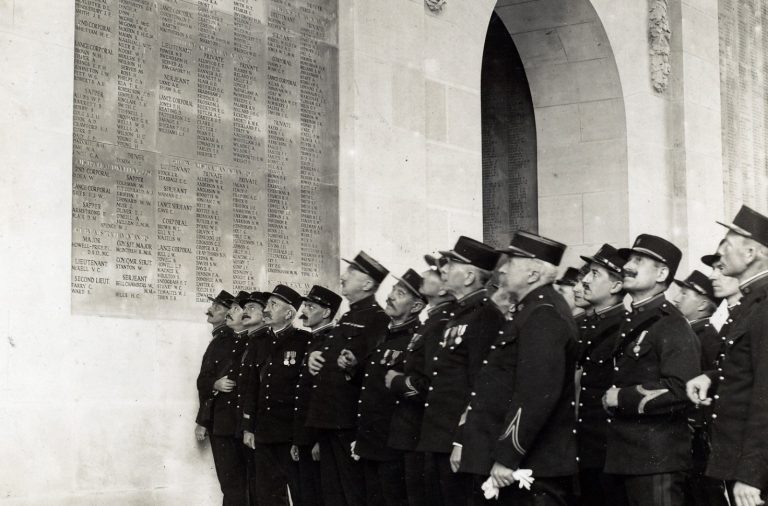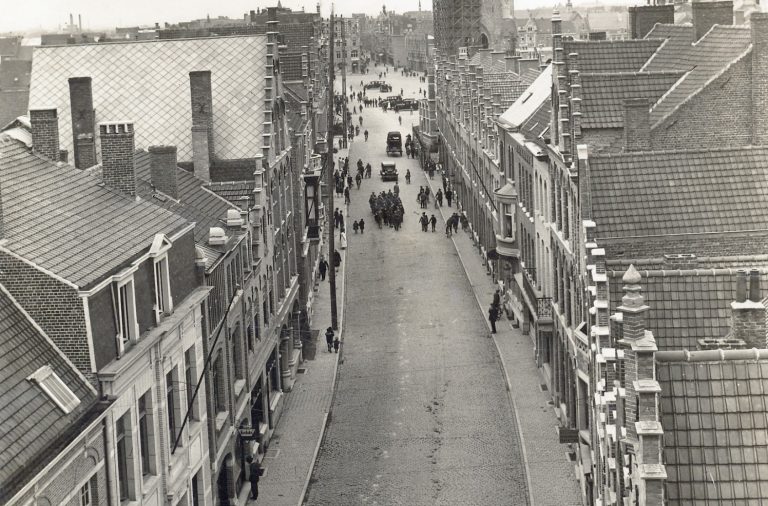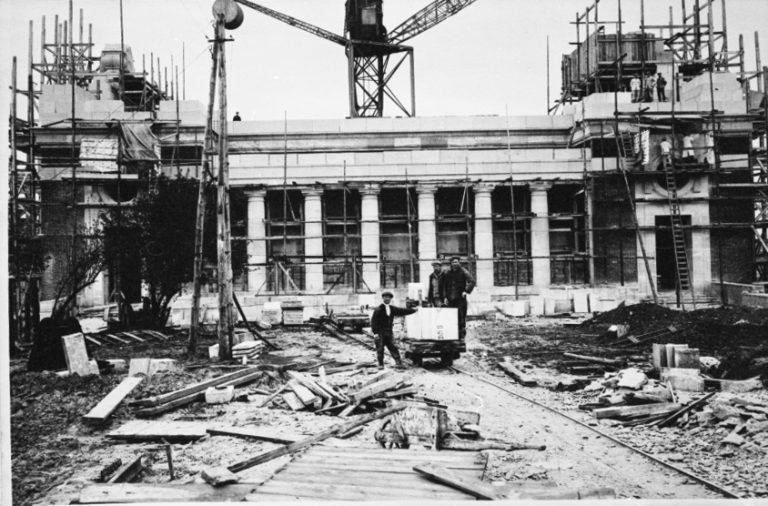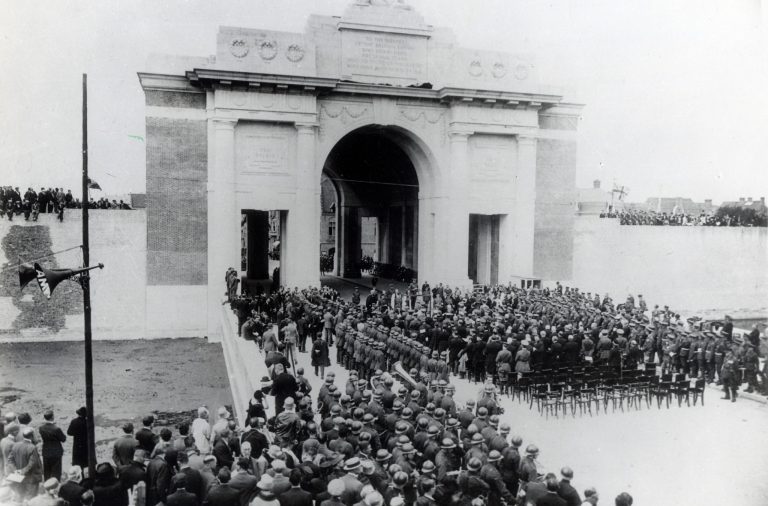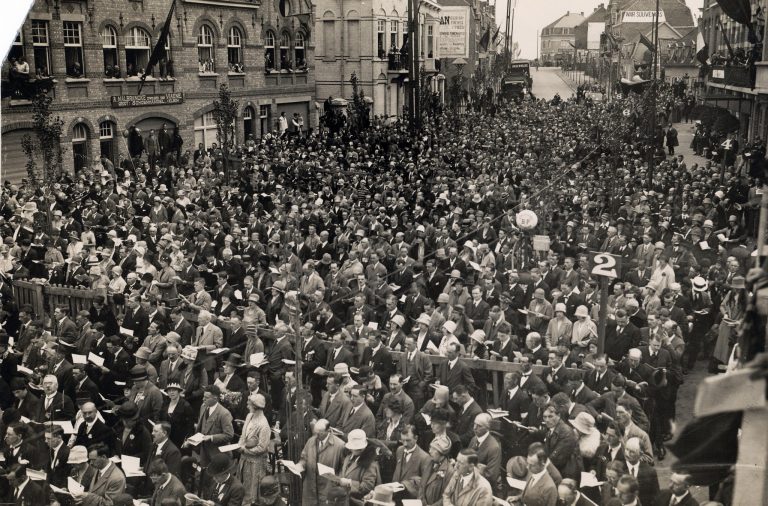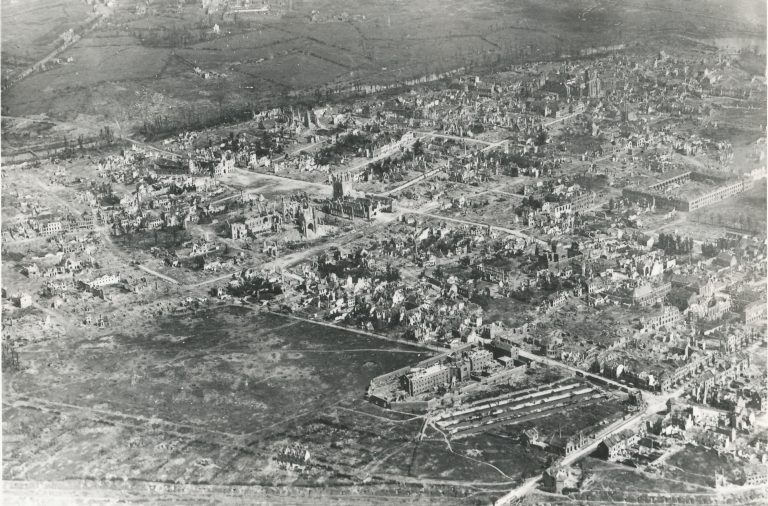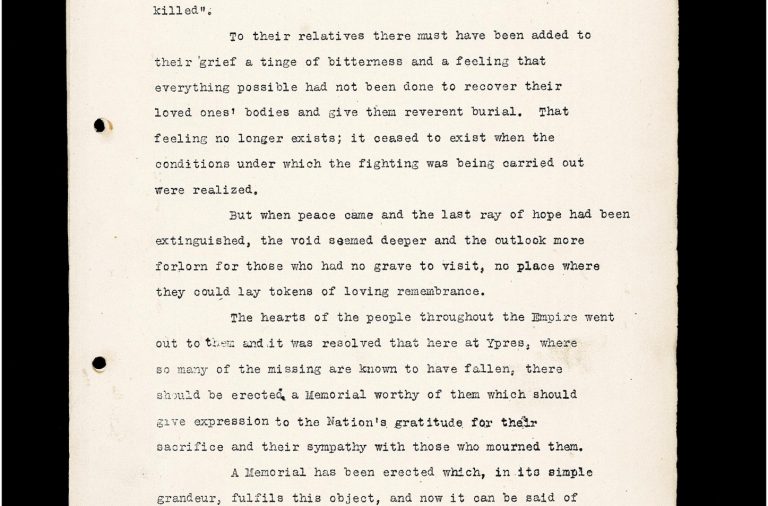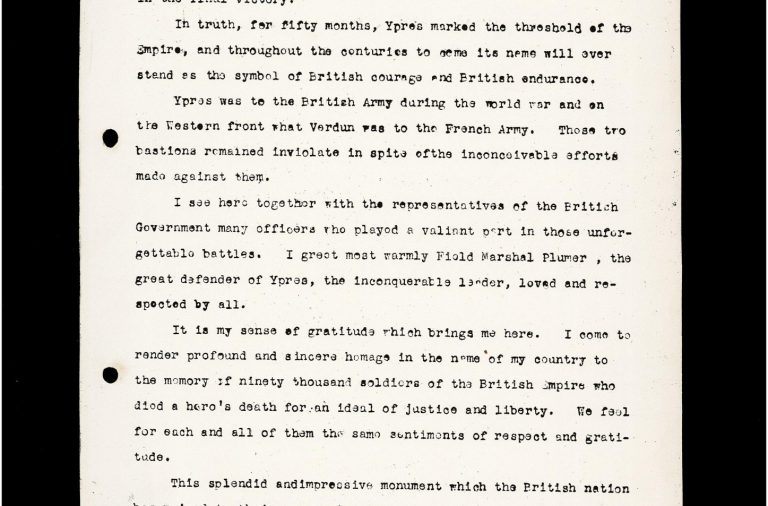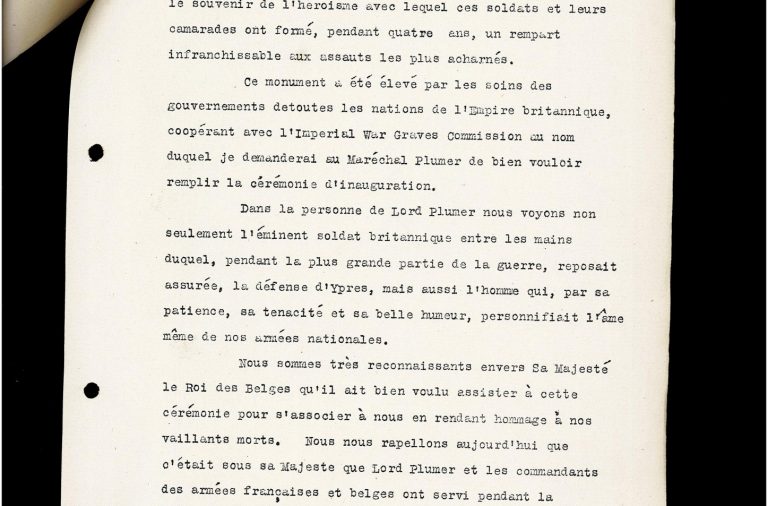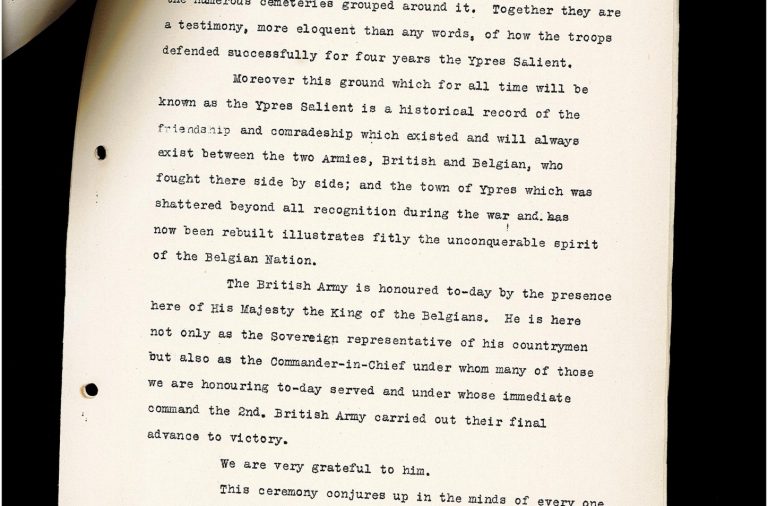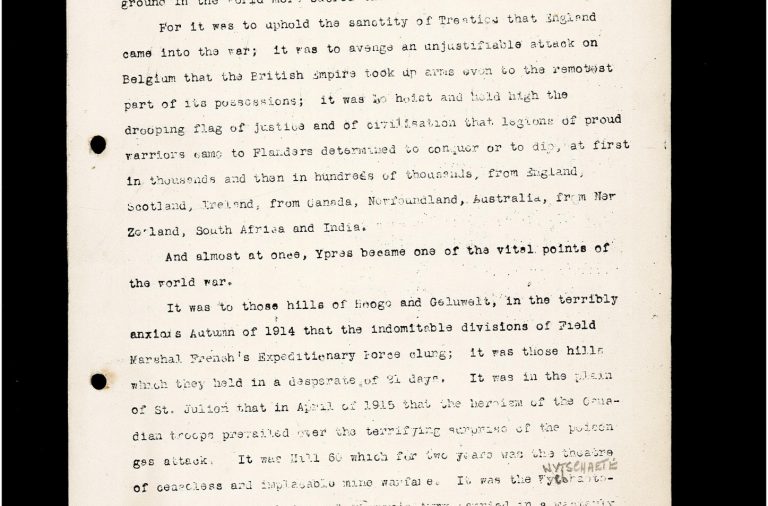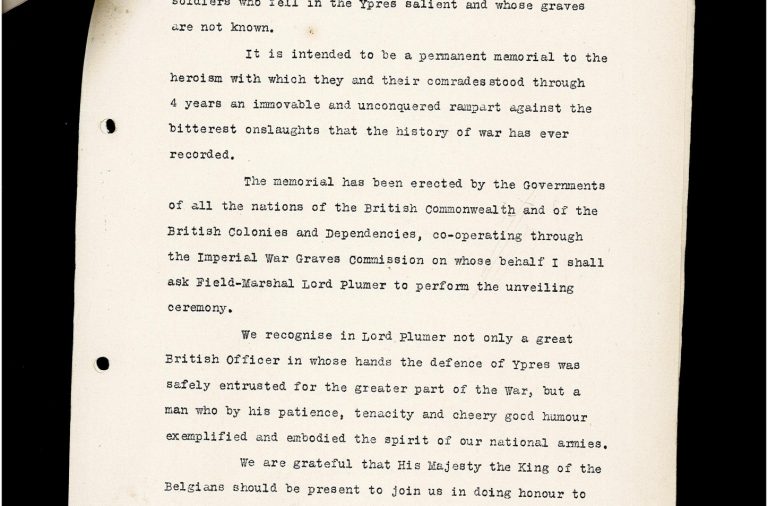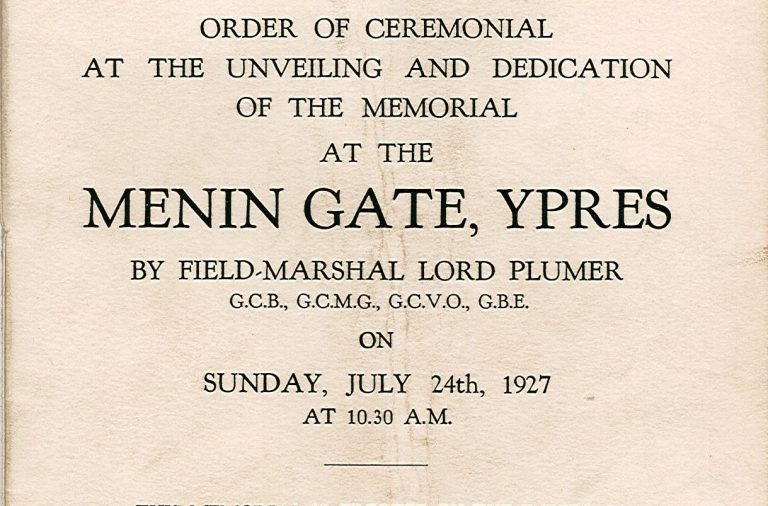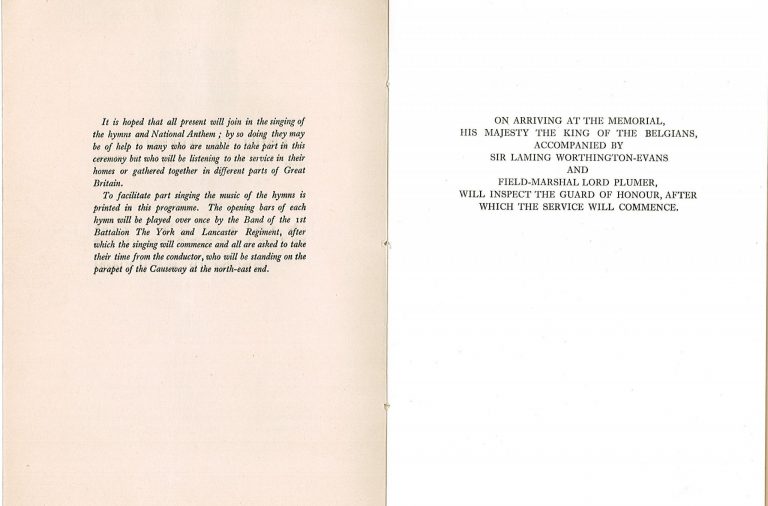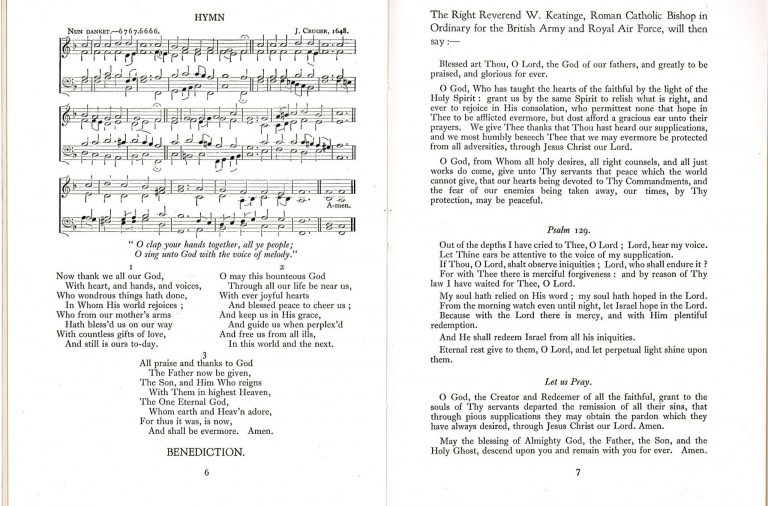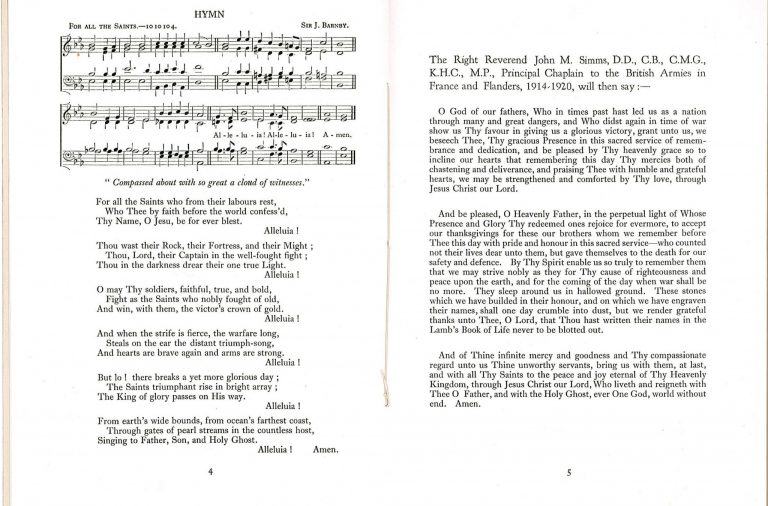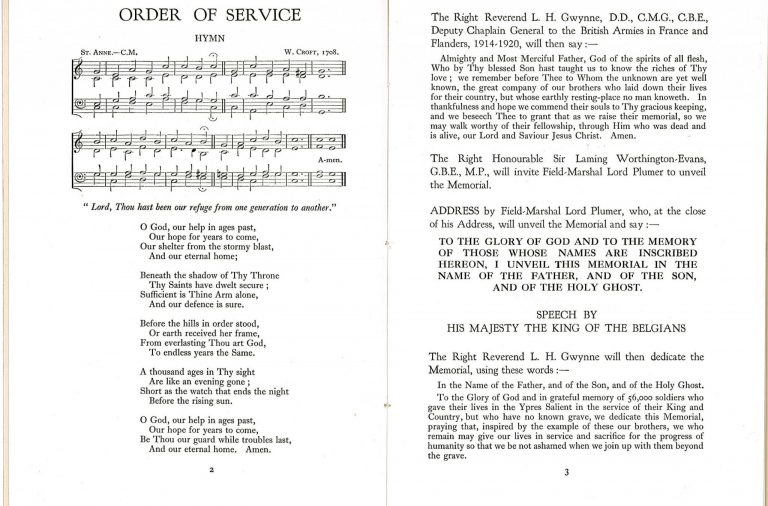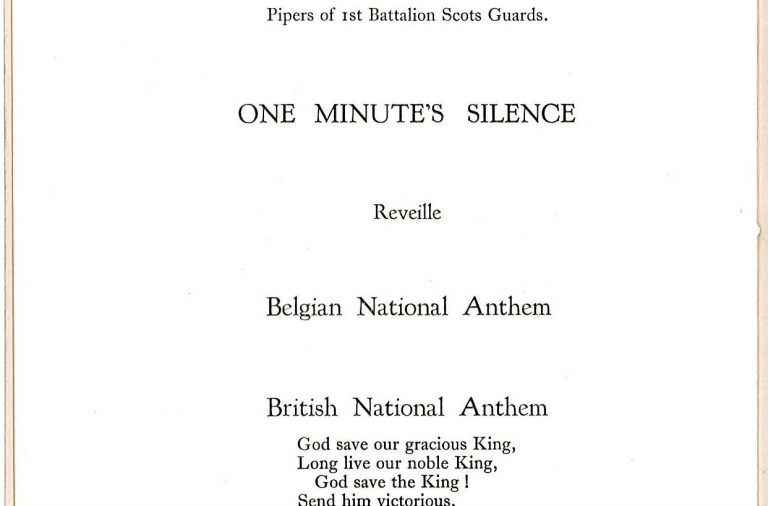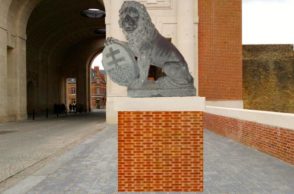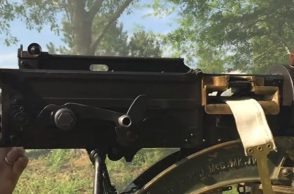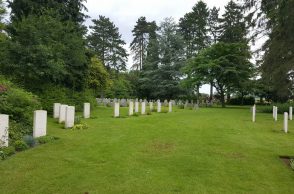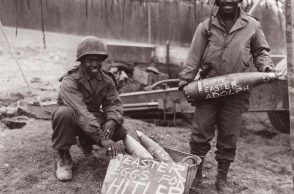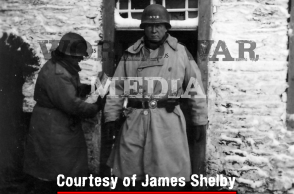The Commonwealth War Graves Commission (CWGC) will mark the 90th anniversary of the Menin Gate’s unveiling and dedication with a special ceremony at 11am (CET) on 24 July 2017.
by Jo Segers
The Menin Gate was the first Memorial to the Missing erected after the First World War by the then Imperial (now Commonwealth) War Graves Commission. The memorial bears the names of more than 54,000 officers and men who died in the Ypres Salient during the First World War and whose graves are not known. It also honours all those who served there, bearing an inscription devised by writer Rudyard Kipling, who was the first Literary Advisor to the Commission:
To the armies of the British Empire who stood here from 1914 to 1918 and to those of their dead who have no known grave.
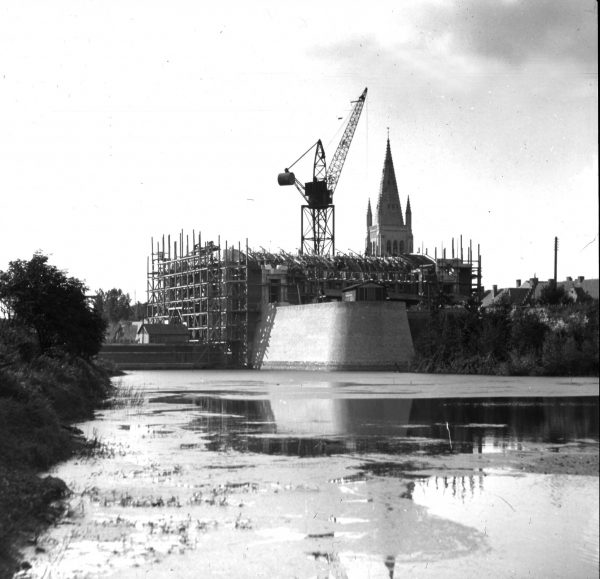
Courtesy of CWGC
Speaking about the memorial, the CWGC’s Director General, Mrs Victoria Wallace said: “The Menin Gate has been the focus of pilgrimage for thousands for 90 years. The first great memorial to the missing, it is an extraordinarily special place of commemoration, and its significance has been enhanced by the devotions of the people of Ypres, who hold their daily Last Post event under its arches every evening. It is hugely gratifying to see so many young people visiting the Gate, ensuring that the names of the missing live forever.”
The memorial was designed by Sir Reginald Blomfield with sculpture by Sir William Reid-Dick, and was unveiled by King Albert I of Belgium and Field Marshal Lord Plumer on 24 July 1927 in the presence of thousands of veterans and family members. Crowds lined the ramparts and the streets, and loudspeakers relayed the events to the market square. The unveiling was also broadcast by the BBC.
At the end of the ceremony buglers of the Somerset Light Infantry sounded the Last Post and pipers of the Scots Guards played a lament.
Soon afterwards, the act of sounding the Last Post became a daily ritual, led by the local fire brigade. It has been sounded under the arch every night at 8pm almost every day since, except during the Second World War when Belgium was again occupied. Today organised by the Last Post Association, the ceremony is often attended by thousands who have come to pay their respects.
The site of the Menin Gate was chosen because of the hundreds of thousands of men who passed through it on their way to the battlefields. It commemorates casualties from the forces of Australia, Canada, India, South Africa and the United Kingdom.
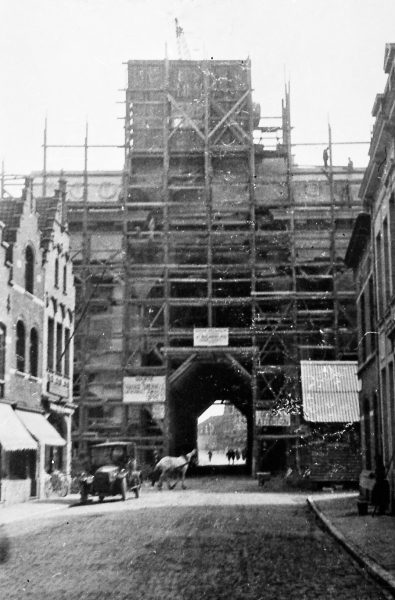
Image from the Goodland- KIngs Pilgrimage collection scanned and enhanced from negatives by Chris Lofty
In his speech at the unveiling, Lord Plumer said: “It was resolved that here at Ypres, where so many of the ‘Missing’ are known to have fallen, there should be erected a memorial worthy of them which should give expression to the nation’s gratitude for their sacrifice and its sympathy with those who mourned them. A memorial has been erected which, in its simple grandeur, fulfils this object, and now it can be said of each one in whose honour we are assembled here today: ‘He is not missing; he is here’.”
To mark both the CWGC’s Centenary and the 90th anniversary of the Menin Gate, a photographic exhibition will open on the Ramparts next to the Menin Gate on 24 July. The exhibition features images from the CWGC’s archive and gives a fascinating insight into the care of this much loved monument and the many CWGC war cemeteries in Flanders. The exhibition will run until the end of September 2017.
The history
From October 1914 to October 1918, five major battles occurred at Ypres (now Ieper) in Belgium. The area saw some of the heaviest fighting in the First World War leaving Ypres in ruins. By the time the last shells fell in Belgium in November 1918, the fighting had claimed 193,000 Commonwealth lives – more than half of these men have no known grave.
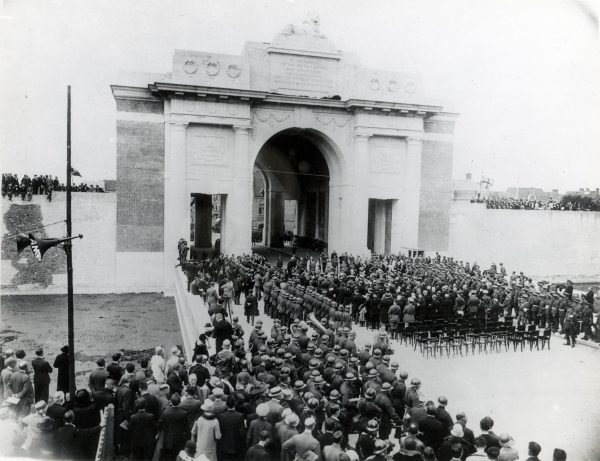
Courtesy of CWGC
As hundreds of thousands of Commonwealth troops had passed through the city on their way to the battlefields, it was decided that Ypres was where the missing should be commemorated. Within the city of Ypres, different options were considered. Moderating Sir Winston Churchill’s suggestion to claim the entire city as a memorial, the Belgian government agreed to make available a section of the ramparts, incorporating the ruins of the old Menin Gate, where a fitting memorial might be built.
“I should like to acquire the whole of the ruins of Ypres… A more sacred place for the British race does not exist in the world,” Sir Winston Churchill, 1919.
The design
Sir Reginald Blomfield, one of the Commission’s first three Principal Architects, was appointed to design the memorial.
He sought to design a monument based around the concept of a triumphal arch and a central hall. He drew inspiration from the seventeenth century Porte de la Citadelle in Nancy, France, a structure he admired.
The memorial is built of reinforced concrete faced with Euville stone and red brick. Its design is neo-classical and features symbols such as a lion, wreaths and garlands.
The lions atop the memorial are the work of Scottish sculptor Sir William Reid Dick. It is the symbol of Britain, but also the lion of Flanders. The sculptor had a distinguished career in the military, serving with the Royal Engineers in France and Palestine. It was while he was in the trenches that he began carving.
The central hall is dominated by the name panels of the missing which run along the entire length of the interior. There are 60 panels, arranged by regiment and in order of rank in alphabetical order.
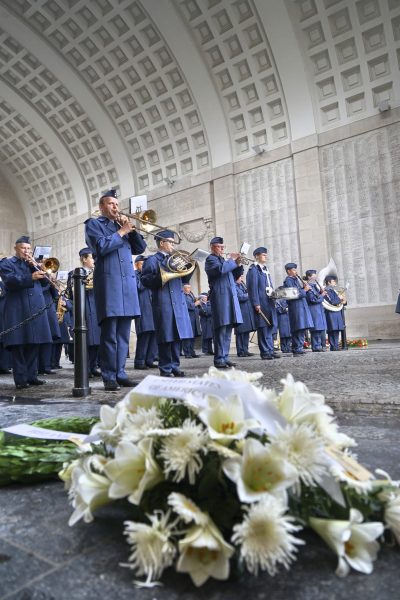
Courtesy of Jo Segers
Today, the memorial bears the names of more than 54,000 men of the forces of Australia, Canada, India, South Africa and United Kingdom who died in the Ypres Salient and who have no known grave. The New Zealand government decided that the names of its missing should be commemorated in cemeteries near to where they died.
(All images are courtesy of Jo Segers, CWGC and the Goodland- Kings Pilgrimage collection scanned and enhanced from negatives by Chris Lofty)
